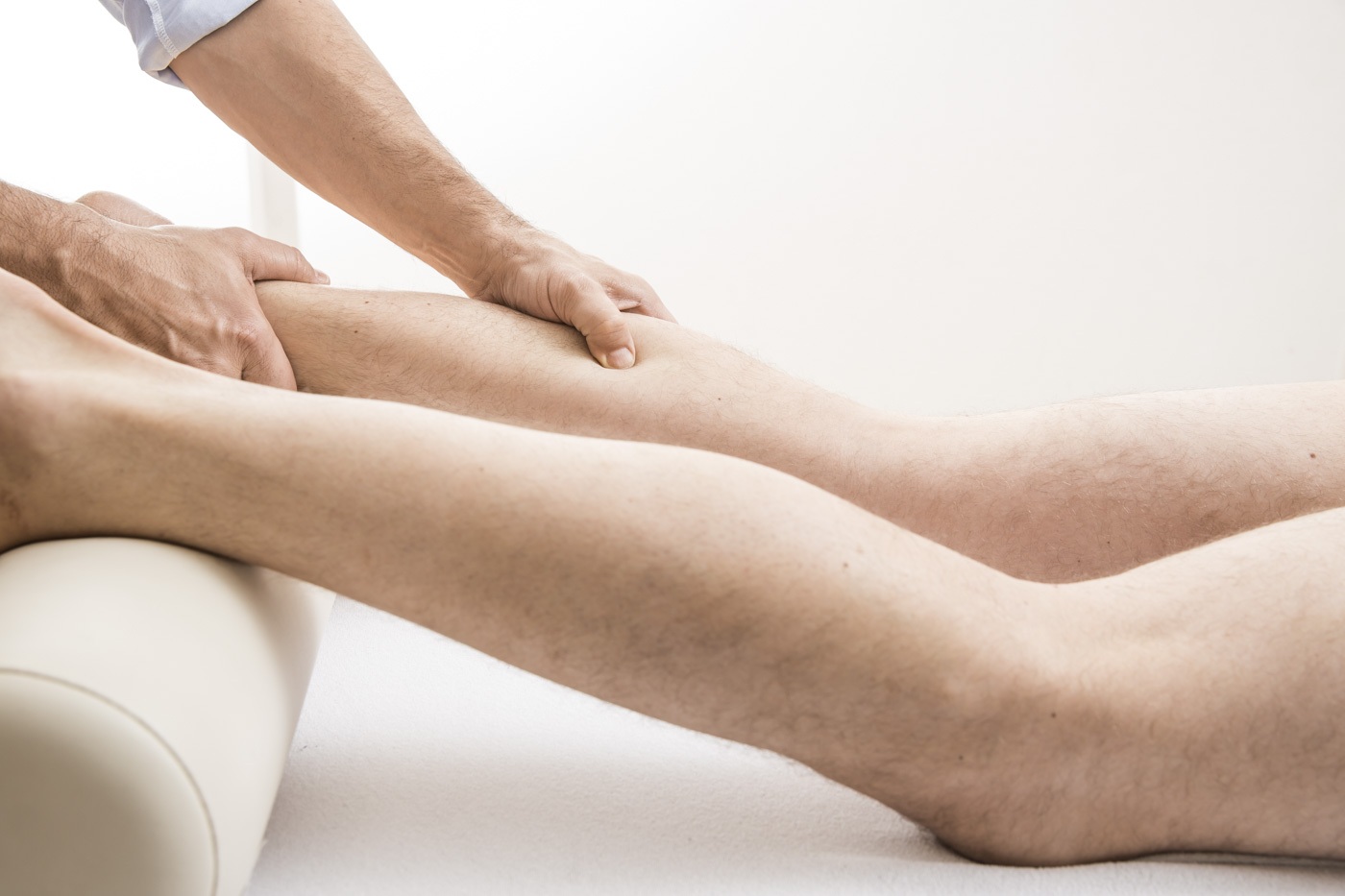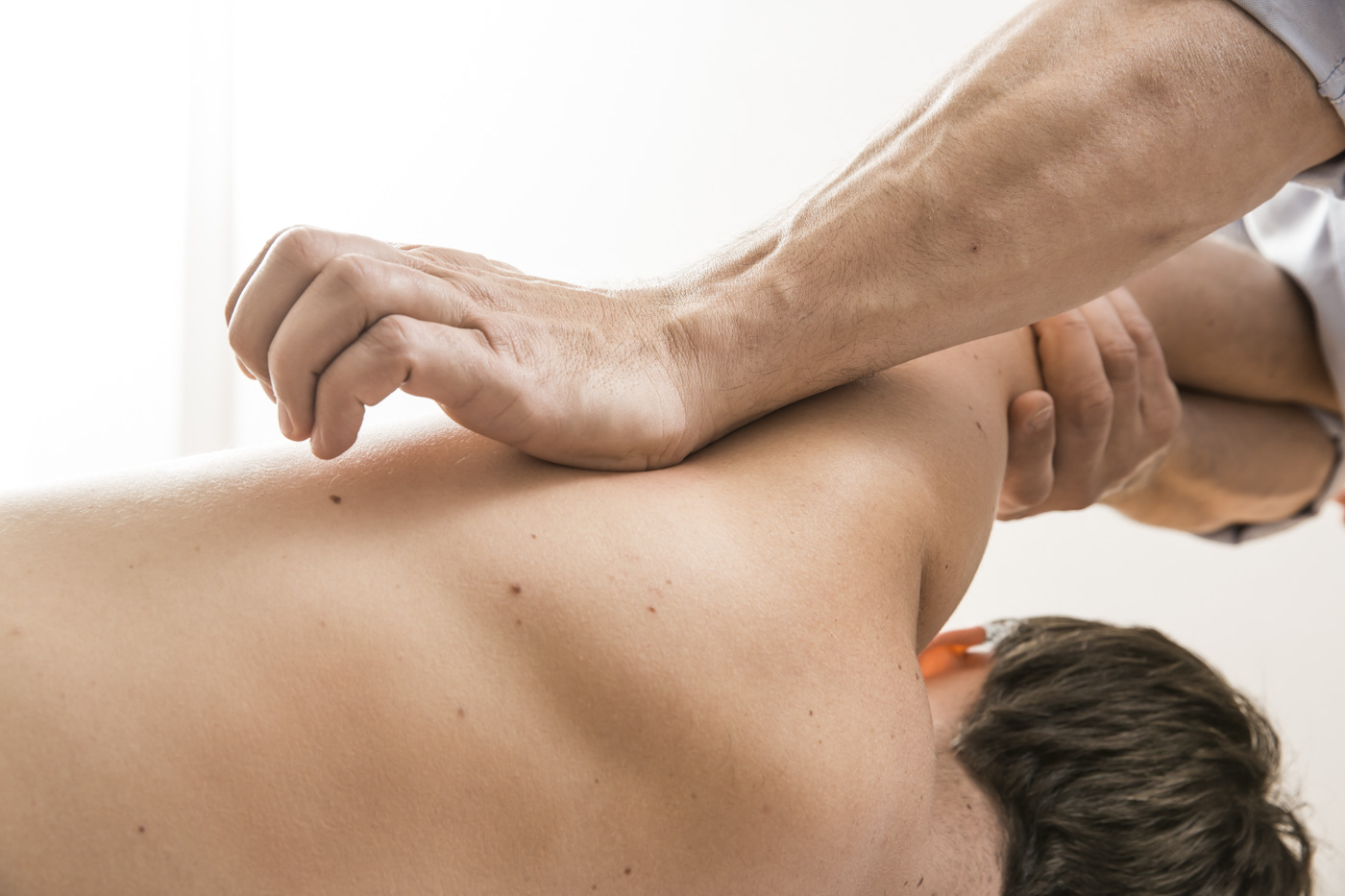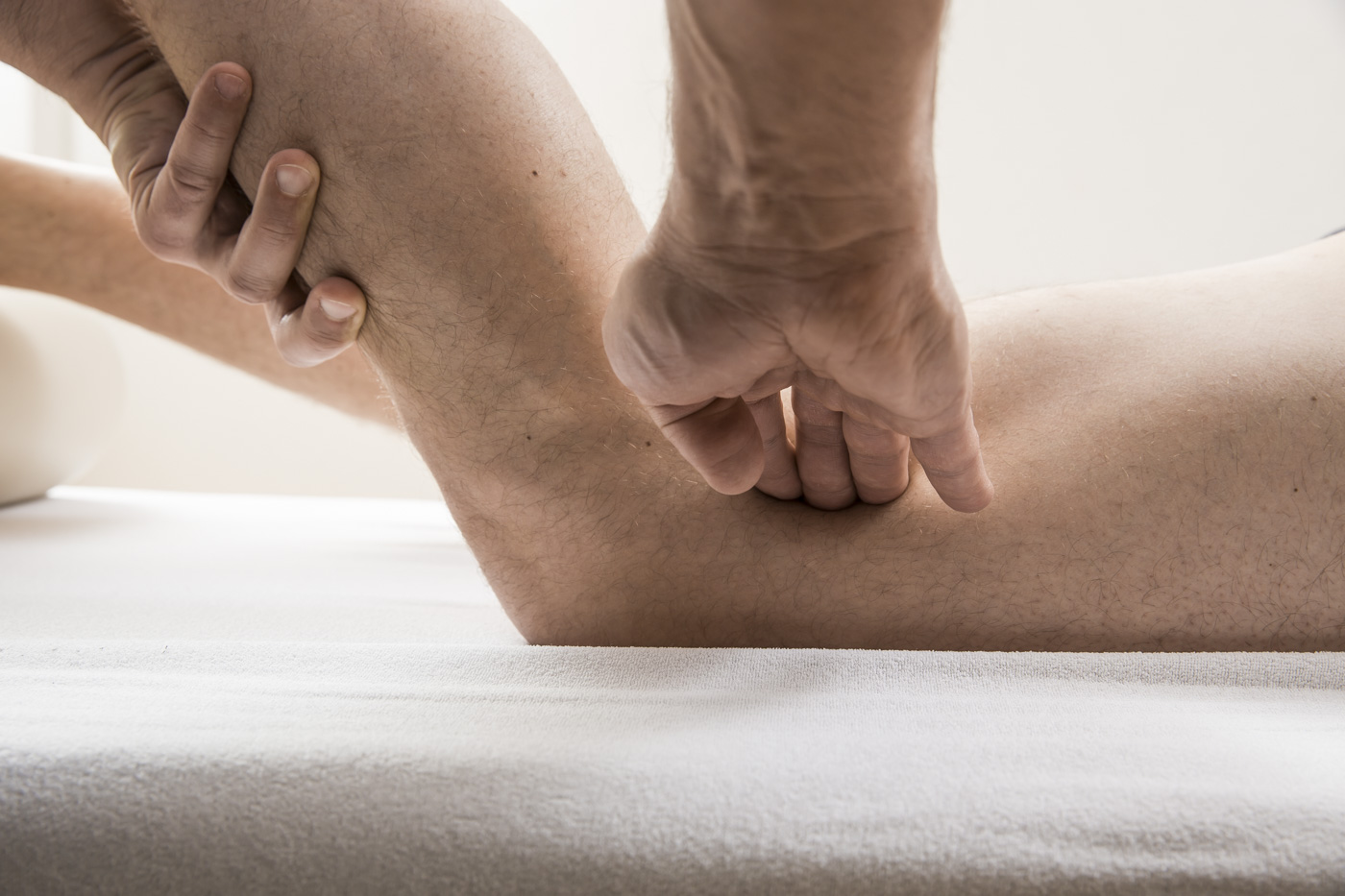Manual Trigger Point Therapy
Manual trigger point therapy is a manual technique to treat trigger points, which are a major cause of muscle pain. It uses strong manual pressure and can be uncomfortable or somewhat painful for the patient. However, as with dry needling, this pain is usually regarded as a "good and releasing pain". There are four techniques. A distinction is made between the different manual trigger point therapy techniques that directly treat the trigger point (technique I and II) and the fascia techniques (technique III and IV). The decision to treat a certain trigger point with dry needling, manual trigger point therapy or a combination of the two techniques, is made by the therapist and the patient. We provide valuable knowledge on these topics in our courses. Relevant contraindications have to be excluded and patients should be informed about the possible side effects.
The Four Techniques of Manual Trigger Point Therapy
Technique I
Technique I is local compression of a trigger point. This technique is also known as ischemic compression. The goals of technique I are to increase the local blood flow as a result to ischemic compression as well as the stretching of the trigger point zone. Technique I may be combined with simultaneous passive or active movements, to optimize the effect. The more accurately the trigger point is treated, the less pressure has to be applied.

Technique II
Technique II is local manual stretching along the taut band. The pressure which is applied is similar to technique I. The goals of technique II are as in technique I to increase the local blood flow as a result to ischemic compression as well as the stretching of the trigger point zone. The stretching effect however is stronger in technique II than in technique I. This technique is very effective. The more accurately the trigger point is treated, the less pressure has to be applied.

Technique III
Technique III is carried out over a large area, e.g. with the palm of the hand. It shouldn't be painful. The aim of technique III is to improve the mobility of the fascia and the entire connective tissue. This is important to ensure intramuscular mobility.

Technique IV
Technique IV, similar to technique III, focuses on connective tissue and fascia. This technique is about improving the mobility between adjacent muscles, i.e. the intermuscular mobility. It may be somewhat painful.

A Brief History of the Manual Trigger Point Therapy
Janet Travell had introduced the concept of myofascial trigger points in the early 1940s. Various manual therapy methods to treat trigger points have since been developed such the ischemic compression, the myofascial release, the post isometric relaxation and others. Classical massage has always treated trigger points, without, however, the use of the trigger point nomenclature and probably also less systematically. Corresponding documents date back to the 15th century. Dr. Ida Rolf (1896 – 1979) was one of the first scientists to study the characteristics of the human connective tissue and developed the rolfing technique, which has become the basis for manual trigger point therapy.
The manual trigger point therapy that we teach, was developed in the early 1980s by the Swiss physician Dr. Beat Dejung. Inspired by the work of Ida Rolf and Simons and Travell’s concept of trigger point therapy, Dejung developed together with a group of physiotherapists, a systematic manual trigger point therapy. It is also known as "The Swiss Approach to Trigger Point Therapy". The manual trigger point therapy treats trigger points as well as the connective tissue and the fascia.
